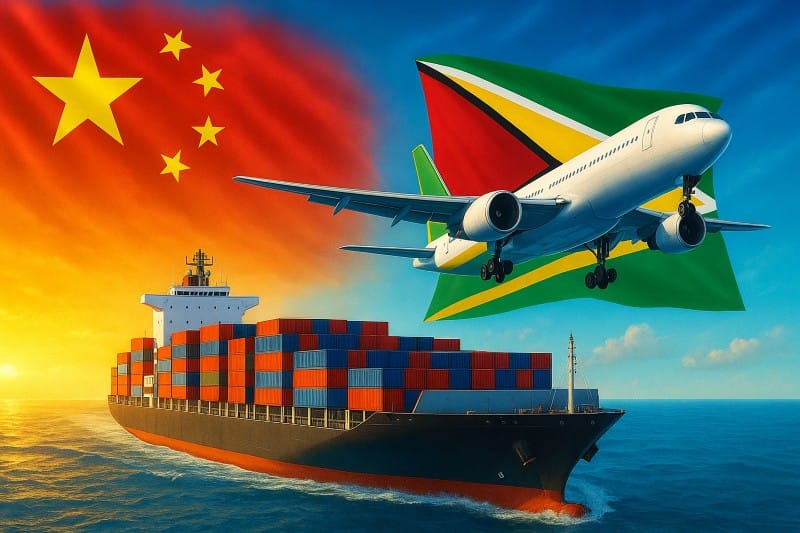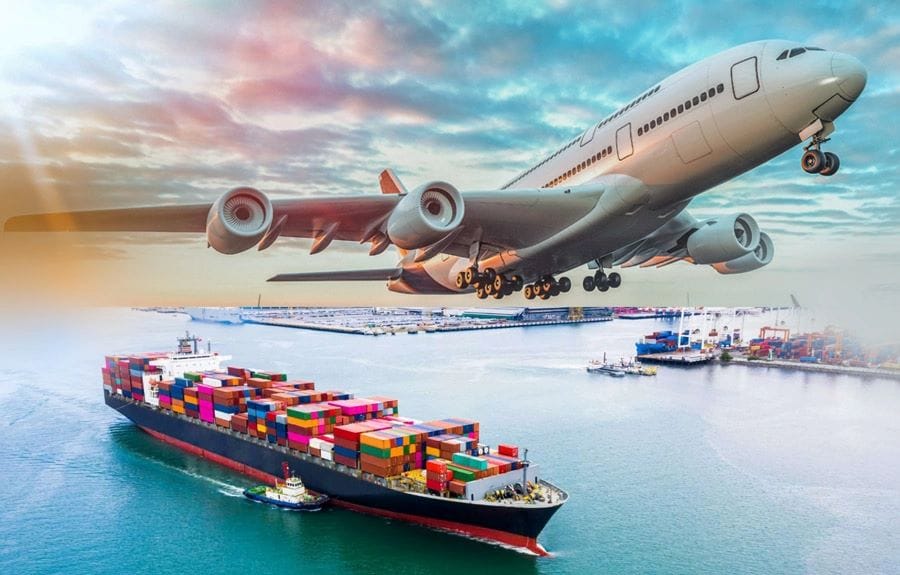With the continuous development of the Central and South American markets, Guyana has gradually become a popular trade destination for Chinese exporters. Choosing an efficient and economical shipping route is crucial. This article will provide you with a comprehensive shipping guide to help you effectively plan logistics between the two countries.
Learn more:
Shipping from China to Suriname
Shipping from China to Venezuela

Shipping Methods from China to Guyana
Air and sea freight are the two most common shipping methods. Each has its own advantages and disadvantages and is suitable for different types of cargo.
Air Freight
Air freight is fast, generally has a faster customs clearance process, is highly secure, and requires minimal ground contact. It is suitable for small-volume, high-value cargo, but it is more expensive and has strict restrictions on cargo size and weight, as well as cargo types.
Sea Freight
Sea freight is an ideal option for bulk cargo and long-distance shipments. It offers low transportation costs, can accommodate large and diverse cargo volumes, and has low carbon emissions per unit of cargo, making it highly environmentally friendly. However, it is significantly affected by weather and port congestion, and its delivery time is relatively volatile.
Major Ports and Airports in Guyana
Major Ports
- Port of Georgetown: Guyana’s capital port and the main import and export port, handling most container and bulk cargo.
- Port of New Amsterdam: Located in the East Berbice-Corentyne region, it serves as a regional distribution hub.
Major Airports
- Cheddi Jagan International Airport (GEO): Guyana’s main international airport, handling most international air cargo.
- Ogle International Airport: A secondary cargo airport, suitable for regional distribution and small shipments.
Shipping Costs from China to Guyana
Shipping costs are dynamic and are affected by various factors, including the mode of transport, cargo size, and weight. However, they primarily consist of the following:
Composition of Ocean Freight Costs
- Basic Ocean Freight: The cost from Chinese ports (such as Shanghai, Shenzhen, and Ningbo) to the Port of Georgetown.
- Port of Origin Miscellaneous Charges: These include booking fees, documentation fees, and THC (Terminal Handling Charges).
- Destination charges: Unpacking fees, port fees, etc. incurred in Guyana.
- Inland transportation costs: Trucking fees from the factory in China to the port, and freight from the port in Guyana to the destination.
- Insurance: Typically 0.3%-0.5% of the cargo value, highly recommended.
Air freight cost structure
- Air freight: Calculated based on the higher of actual weight or volumetric weight (formula: length × width × height (cm)/6000).
- Fuel surcharge and security surcharge.
- Airport handling fees at the port of departure and destination.
| Mode | Weight/Container | Destination | Cost |
|---|---|---|---|
| Air Freight | 1,000 kg+ | Georgetown, Guyana | $5.6/kg |
| Sea Freight | 20GP | Guyana | $2,550 |
| Sea Freight | 40GP | Guyana | $4,500 |
| LCL | Per Cubic Meter | Guyana | $120 |
Learn more about fees: How Much Does it Cost to Ship from China to Brazil?

Customs and Clearance in Guyana
In international trade, customs and clearance are crucial components of the logistics process. Understanding and following the correct customs clearance procedures is crucial to ensuring the smooth and timely arrival of goods.
Preparing Necessary Documents and Documents
- Commercial Invoice: This is an invoice that details the value, quantity, description, and details of both parties.
- Packing List: This lists the specific packaging details of the goods, including the dimensions, weight, and contents of each package.
- Bill of Lading: For ocean freight, the bill of lading serves as proof of the contract of carriage and proof of ownership of the goods.
- Transport Contract: This outlines the terms and responsibilities for the carriage of the goods.
- Certificate of Origin: This certifies the origin of the goods and may be required in some cases.
- Insurance Certificate: This proves that the goods have been insured for transportation.
Customs Clearance Process
- Before arrival at the port/airport: Your freight forwarder or the customs clearance agency in Guyana will pre-verify the documents.
- Upon arrival of goods: Submit all required documentation to customs for declaration.
- Inspection: Customs may conduct a physical inspection, either randomly or based on a risk assessment (inspection fees apply).
- Common import taxes and fees: These primarily include customs duties and VAT. The standard VAT rate in Guyana is 14%.
- Release for collection: After all fees have been paid, customs releases the goods and the consignee can collect them.
How to Choose the Right Freight Forwarder
Choosing the right freight forwarder is crucial to your logistics process, especially for international shipments. A professional and experienced freight forwarder can save you time, reduce costs, mitigate risks, and ensure smooth customs clearance for your shipments.
Guyana Local Network
Ask the agent if they have partner agencies in Guyana. A freight forwarder with a strong local network is preferred, as they can effectively handle customs clearance and final delivery.
Expertise and Experience
Choose a freight forwarder with experience in South American/Caribbean routes.
Service Transparency
Clearly understand the cost structure to avoid hidden charges.
One-Stop Service Capabilities
A good freight forwarder should provide full door-to-door services from your door-to-door location in China to your door-to-door location in Guyana, including domestic customs brokerage, international transportation, Guyana customs clearance, and final delivery.
Time Guarantee
Provide a guaranteed shipping time and a cargo tracking system.
Shipping from China to Guyana involves multiple steps. This article explains how choosing an experienced freight forwarding company can help you reduce risks, save costs, and ensure that your goods arrive in Guyana smoothly.
